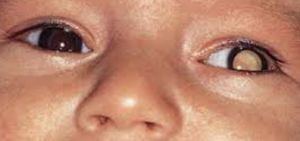Parents can teach their children the lifestyle habits and behaviors that are best for their eyes and vision.
Most children can appreciate the importance of clear vision and good eye health, and are open to learning how to best protect their eyes from infection and injury.
Beginning with positive habits at a young age will aid in the development of a lifestyle that will encourage healthy eyes and vision for the rest of their lives.
1. Eat right
Eating a well-balanced diet rich in fresh fruits and vegetables, particularly green leafy vegetables like spinach, kale or broccoli, as well as omega-3 fatty acids found in fish like salmon, halibut and tuna will provide your eyes with the nutrition they require to function at their fullest.
2. Enjoy exercise
A healthy lifestyle has been found to lower the risk of developing several eye diseases, as well as general health problems, like Type 2 diabetes, which can lead to vision loss and even blindness.
Spending time outdoors can also reduce the risk of developing myopia (short-sightedness).
3. Protect your eyes
When participating in activities such as sports, especially those that are high-impact or involve flying objects, eye protection is vital.
Also using chemicals or power tools, or working with sharp objects like glass or wood, make sure their eyes are protected.
Safety behaviors such as carrying pointed objects like scissors, knives and pencils with the sharp end pointing down can help safeguard your eyes. When using sprays, make sure they’re pointed away from your eyes.
To avoid eye damage, consult your eye doctor about the appropriate eye protection for your child.
4. Wear sunglasses
When your child is spending time outdoors, ensure they wear 100 percent UV blocking sunglasses and a hat with a brim to protect the eyes from the sun.
Cataracts, macular degeneration and pterygium are all eye diseases that can be caused by the sun’s radiation. Sunglasses also shield the eyes from the elements.
Sand, wind, and dust can irritate your eyes or scratch your cornea, which can cause irreversible eye damage.
SEE RELATED: Healthy Eyes for Life: Babies and Toddlers
Schedule an appointment with an eye doctor near you to discuss your child’s vision.
5. Avoid eye rubbing
Avoid rubbing the eyes, even if it feels like there is something stuck inside it.
Rubbing your eyes can scratch your cornea, the clear front part of the eye. Itchy, irritated eyes are a symptom of many conditions, including eye infections, allergies and dry eye syndrome.
6. Take a break from digital screens
These days, screen time is a major issue.
Children spend over 6 to 7 hours every day staring at digital screens, whether it be a computer at school or at home, a smartphone, a TV, or tablet or gaming device.
Spending excessive time staring at a screen is a leading cause of eye strain.
However, the 20-20-20 rule may be useful: take a 20-minute break every 20 minutes and stare at anything 20 feet away for 20 at least seconds.
7. Keep hands clean
Handwashing helps to prevent bacterial, viral and fungal infections. Children who touch their eyes after playing outside are putting themselves at higher risk of an eye infection.
Encourage your children to wash their hands frequently, especially after coming home from school or playing outside, and to refrain from rubbing their eyes.
8. Your eye doctor is your friend
Annual eye exams are vital to assess your children’s eyesight and eye health.
Take time to find the right eye doctor for your child.
Children’s vision can change quickly as they grow. In some cases, dramatic changes can occur in less than a year!
Undiagnosed vision problems can cause headaches and eye strain, and can also interfere with schoolwork.
LEARN MORE: Children’s Vision
Schedule an eye exam with an eye doctor near you, to evaluate your child’s eyes and vision.
Teach your children about fundamental eye care and safety to help them learn the importance of taking care of their precious eye sight.
Encourage your children to follow these guidelines— and as a parent, remember to set a good example for them!










